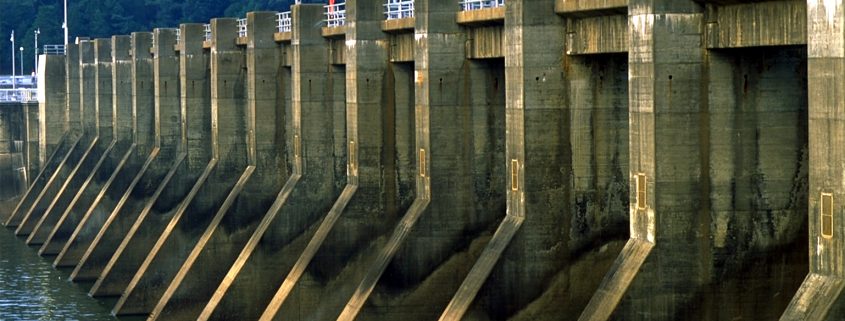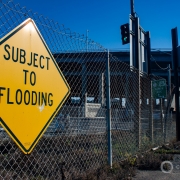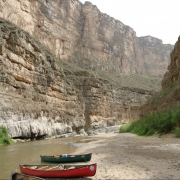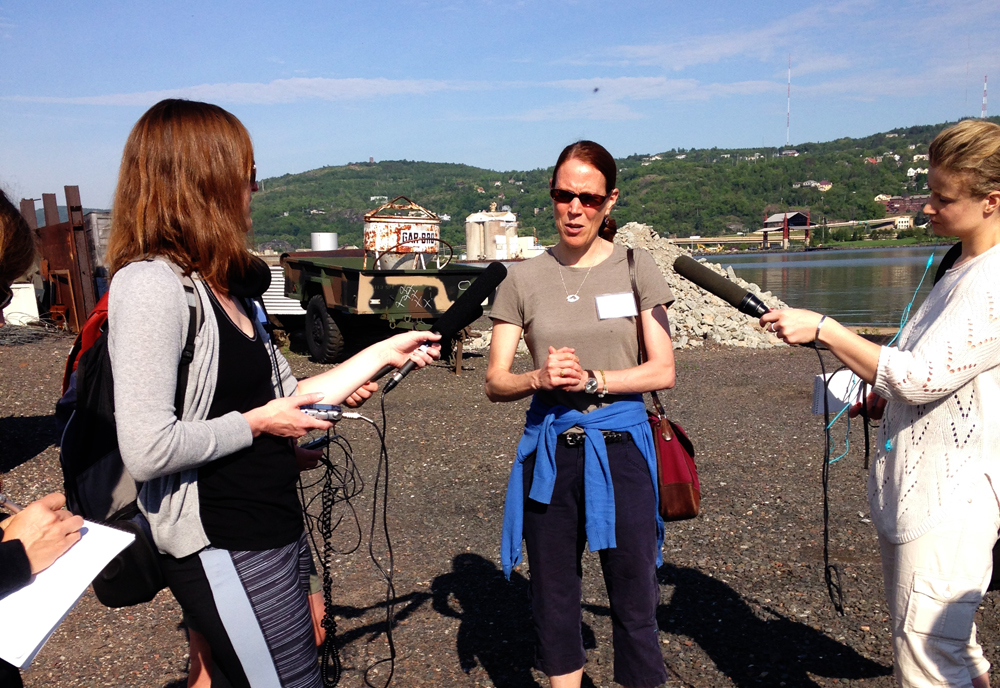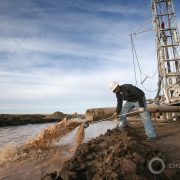Alabama Risks Lives with No Dam Oversight
Only state without a dam safety program.
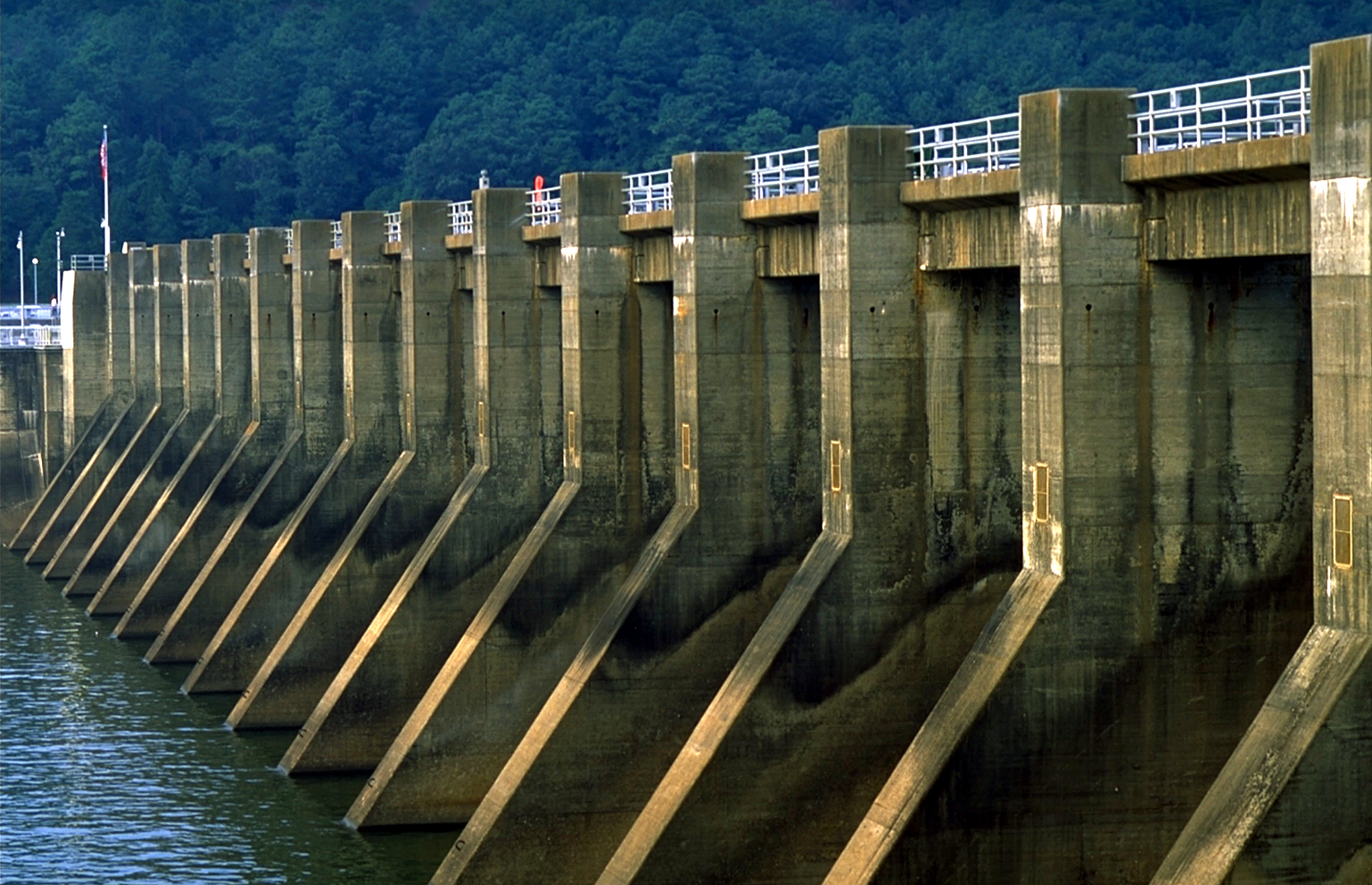
Guntersville Dam is a federally operated facility on the Tennessee River in northeastern Alabama. But most Alabama dams — nine out of 10 — are privately owned. The state does not know the condition or location of many of them.
By Brett Walton, Circle of Blue
Bruce Tschantz is direct about Alabama’s insistence that monitoring and inspecting dams is not needed.
“If you live in Alabama below a dam you’re basically taking a life risk,” Tschantz told Circle of Blue. Tschantz brought dam safety to national attention as an engineering consultant to the Carter administration in the 1970s, a decade when at least 466 people in the United States died in dam failures. Tschantz would later become the first chief of federal dam safety at the Federal Emergency Management Agency.
In general, U.S. dam safety has significantly improved — no one has died in a dam failure since 2006 — but a series of ruptures in South Carolina and North Carolina in the last 15 months during tropical storms has revived interest in the security of the nation’s more than 90,500 dams. Engineers and dam safety officials said that lack of knowledge about the condition, number, and location of dams in Alabama puts state residents at risk of injury or death.
Tschantz’s opinion is widely shared, if not stated in such stark terms. In interviews with a half-dozen dam safety experts, each pointed to Alabama when asked about states with weak dam oversight. That’s an easy judgment when Alabama is the only state without a safety program.
The American Society of Civil Engineers, in its state infrastructure report card, rated Alabama dams a question mark, saying that it did not have enough information to evaluate their condition. The last survey of state dams is more than three decades old. Of the 2,200 dams that the state knows about, only 2 percent have an emergency plan to coordinate evacuations in case of a break, according to ASCE.
“We’re trying to figure out what our risk is,” Sheila Montgomery-Mills, past president for the society’s Alabama section, told Circle of Blue. “When we don’t know where all the dams are, we don’t know the risks.”
“It is an unknown,” said Mark Ogden, project manager with the Association of State Dam Safety Officials, about the hazard potential of Alabama dams. “We don’t know how they were constructed, what materials were used, whether metal pipes are corroded. The big concern is that unknown. There’s a good chance they are not built to today’s standards or they were built in the middle of nowhere and now there are people downstream.”
More data will soon be available. The Alabama Department of Economic and Community Affairs began a statewide dam inventory in 2010, but the process has been slow, in part because of limited funding provided primarily from Federal Emergency Management Agency planning grants. Officials are using aerial imagery, flood studies, maps, and hydrologic databases to locate dams and then determine which are the most hazardous if they were to fail. Because of minimal funding, the inventory is being done from office desk, not by examining dams in the field, according to communications director Jennifer Ardis. Even so, the count will grow. An interim report from 16 counties found four times as many dams as previously listed. The survey should be completed next year, the department says.
There was a half-hearted attempt recently to grant the state a measure of regulatory authority. A state lawmaker introduced a bill in March 2014 to establish a dam safety program, but it did not pass. Legislators are generally opposed to additional regulation, Ogden said. Also, the bill was put together at the last minute and did not have time to be vetted, according to Montgomery-Mills.
Because there is no safety program, “no one is paying attention,” said Marty McCann, founder of the National Performance of Dams Program at Stanford University. “I would expect that there are dams that are inadequate.”
Only one in five of the most hazardous dams has been inspected in the last five years, according to the Association of State Dam Safety Officials.
“Things happen slowly in dams,” Tschantz told Circle of Blue. “The dam might have been there 50 years and nothing happened until now. Then boom! A tropical storm comes zipping up and you realize that the dam is not so good. We’re learning every time a major storm comes through how complacent dam programs and owners are at maintaining safe structures.”
This is familiar territory, Tschantz explained. Dam safety programs tend to follow the rule of politics, which is: crisis captures attention. “Dam failure is about the only way a state is going to get funding,” he said.
Brett writes about agriculture, energy, infrastructure, and the politics and economics of water in the United States. He also writes the Federal Water Tap, Circle of Blue’s weekly digest of U.S. government water news. He is the winner of two Society of Environmental Journalists reporting awards, one of the top honors in American environmental journalism: first place for explanatory reporting for a series on septic system pollution in the United States(2016) and third place for beat reporting in a small market (2014). He received the Sierra Club’s Distinguished Service Award in 2018. Brett lives in Seattle, where he hikes the mountains and bakes pies. Contact Brett Walton

